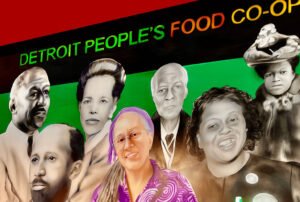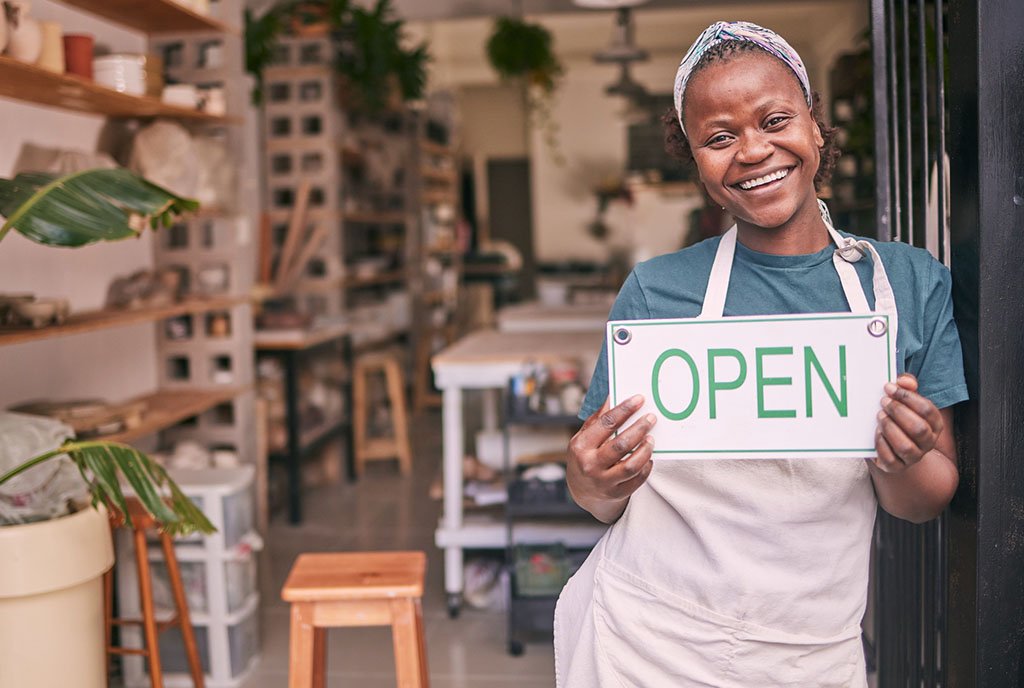

Day laborers—in Spanish, jornaleros—are at once the most and least visible people in the US. In non-pandemic times, at least, you can readily find people who provide day-labor services standing by the side of the road at busy intersections. And yet these people often remain out of sight and out of mind.
When day laborers work, they’re usually hired directly by homeowners or employed by contractors or subcontractors who do business with homeowners. A study published back in January 2006, titled “On the Corner: Day Labor in the United States,” estimated there were 117,600 people “either looking for day-labor jobs or working as day laborers.” Of course, 14 years later, the number is surely much greater. Now, these 100,000-plus workers who have been living paycheck to paycheck are being asked to stay home.
Due to the COVID-19 pandemic, job placements for day laborers have plummeted. The vast majority are undocumented, and, due to their status, they have been excluded from the cash payments to families contained in the CARES Act, from unemployment insurance, and from other benefits. And, so, the nonprofits that serve these day laborers have had to improvise.
Nationally, there is a network of worker centers that together form NDLON, the National Day Laborer Organizing Network. The centers in the network, about 70 of them, collaborate for advocacy purposes, as well as to share stories and information among the group.
Pablo Alvarado, NDLON’s co-executive director, notes that these workers’ only safety nets come from themselves, their families, worker centers, and maybe community clinics. Their choice is stark: go without or risk exposure to the virus.
To get a deeper understanding of their challenges, NPQ conducted interviews at two centers—one, a small-to-midsize center in Santa Cruz, California, and the other a larger nonprofit in Brooklyn, New York.
Ligia Guallpa, who immigrated to the United States as a child from Ecuador, is executive director of the Worker’s Justice Project (Proyecto Justicia Laboral) in Brooklyn, a nonprofit founded a decade ago that operates two centers for day laborers. As Guallpa explains, “One is focused on the construction industry, and one on the cleaning industry. We have been able to create a safe space for workers to come together to set standards.”
All told, the Brooklyn-based nonprofit employs a staff of 12 and serves about 3,500 members who work in a number of industries, including construction, housecleaning, street vending, restaurants, delivery, and warehouses.
Even in good times, Guallpa notes, the work is unsteady. Still, before the pandemic, a lot of their members were working three or four days a week. “They were able to find work and feed their families.” And typically, on jobs, workers earned $20–25 an hour.
These decent earning levels didn’t just happen. As Guallpa explains, “Along with my coworker, Yadira Sanchez, we cofounded the organization to create a safe space for workers to organize, our union of community members and workers. Some call it our ‘little union.’ It is a group that dreams that it is possible for workers to have dignity and respect in their own workplaces and be treated as human beings.”
“Unfortunately, due to the pandemic a lot of construction and all of the workplaces have shut down,” Guallpa explains. “At least 60 percent of our membership are unemployed—have not been able to work for 4-5 weeks.”
This, Guallpa adds, creates a deeper issue—an “economic epidemic that is mostly impacting day laborers and domestic workers, nontraditional industries where employment already was not steady. They are not able to qualify for unemployment insurance or for paid sick time leave, because their employment is not steady.”
Worker Stories from Santa Cruz
The Day Workers Center in Santa Cruz County, California, founded in 2013, is part of the region’s Community Action Board, a 501c3 community action agency that traces its roots to President Lyndon Johnson’s Great Society in 1965. Its scale is much smaller than its Brooklyn counterpart, but many common threads exist.
The Santa Cruz center supports about 260 people according to Alcance (outreach) employment programs director Maria Rodriguez-Castillo. Roughly speaking, half are from Mexico, another 30 percent are Latinx but from outside Mexico, and a fifth are from across the world.
Javier Rodriguez, who grew up in the Mexican state of Jalisco, is a day laborer himself and has been a leader at the center. He’s a former president of the workers’ committee, a position chosen by his coworkers to liaise with the outside world.
Rodriguez speaks to the workers’ simultaneous visibility and invisibility: “The entire world—whether they are looking for housecleaners or construction workers—they know where we are.”
Rodriguez adds, “We are a key force in the economy of this country. I think everyone knows that informal workers are here, and they say they don’t want us, but it is a political game.”
Rodrigo Perez Valencia is the current president of the day laborers in Santa Cruz. Perez Valencia hails from Oaxaca. He has lived in the US for over a decade, but his family is still in Oaxaca, so he sends remittances every month. He had been earning as much as $2,000 a month before the pandemic. Now, he only gets work once or twice a week at most.
Perez Valencia adds that he was part of the group that first found a home for the day laborers’ center back in 2013. He recalls that getting community acceptance of the center had been challenging. “It took almost two years for us to convince the neighbors that we are not troublesome people.” He adds, “the Center restored to us the dignity of being respected as human beings.”
The center aims to secure fair conditions of employment for the day laborers and seeks to enforce a standard wage of $18 an hour. For employers, the center ensures quality work; for workers, it ensures fair payment and also reduces uncertainty.
Sign up for our free newsletters
Subscribe to NPQ's newsletters to have our top stories delivered directly to your inbox.
By signing up, you agree to our privacy policy and terms of use, and to receive messages from NPQ and our partners.
It is worth noting that establishing a center requires not just persuading employers, but the workers themselves. Rodriguez says he was used to finding his own way and was at first skeptical of why he needed a center for support.
“I was a little bit doubtful,” Rodriguez explains. “Who are you?” he first asked. But then he saw he could have access to legal assistance and be better protected, and so he began to attend the worker meetings and ultimately became a big believer in the center.
Rodriguez describes a meeting after he became part of the center where he and his coworkers had to face down racism and a hostile white community, even in allegedly liberal Santa Cruz. “The aggressiveness stopped me in my tracks,” Rodriguez recalls. In response, he said, “Do not judge us before you know us. Give us an opportunity. And from there you can judge us.”
Rodriguez adds, “You have to reach the heart to get an opportunity. That is what we aim to do. And for that we continue to struggle.”
The Center also provides a variety of other services. For example, the Santa Cruz center provides job training classes, offers English as a second language, and helps with the census. More broadly, it helps make sure day laborers get the support they need. One woman, who asked that her name be withheld, says she grew up in Mexico but had lived in the Midwest beforehand, from which she fled due to domestic violence. When she arrived in California, the center helped her and her three children get back on their feet. They connected her with counseling services and gave her assistance so she could enroll her children in school, get food stamps, and find a lawyer to get a restraining order for protection.
Before the pandemic hit, this woman had been earning $400–600 per month as a housecleaner through the center. Now, her income has disappeared. She notes that, fortunately, her youngest son “does not realize what is happening. The teacher has helped him out, giving him a Chromebook so he can attend virtual classes.”
As Rodriguez-Castillo points out, job loss has placed many people the center supports in situations of extreme financial stress. Many need food and shelter; some day laborers have had to live out of their cars because they cannot afford rent.
The center has responded in a few ways. In addition to working with schools, “we are also working so that employers know that the jornaleros are taking measures to protect themselves from COVID, so that they feel at ease about hiring them,” Rodriguez-Castillo says.
Additionally, the center has supported advocacy that in California resulted in a $75 million fund, boosted with $50 million in philanthropy, that is helping provide $500 cash payments for undocumented workers. It now serves as a distribution site for those $500 checks. It is estimated the state fund can provide $500 checks to 250,000 people—but that’s a fraction of the state’s 2.2 million or so undocumented residents.
Echoes of Superstorm Sandy
Much has been justifiably written about the unprecedented nature of the pandemic crisis, but for New York City, Guallpa notes, some aspects feel familiar. As with Sandy, Gaullpa observes, “Day laborers and housecleaners are again in the front lines of the cleanup and recovery. Unfortunately, the saddest part is despite their efforts during the recovery, their assistance and humanity is denied.”
Unlike California, in New York, there is no state fund. The Open Society Foundations have granted New York City $20 million, which is supposed to provide up to $1,000 per family for 20,000 undocumented families. As with California, the funding falls far short of the need; the city estimates that there are at least 127,000 undocumented residents.
For Guallpa, the shortfall just reinforces the need for members to self-organize. Guallpa relates, “We are supporting a group of women to come together to create masks.” Additionally, Guallpa says, “While we’re fighting to protect workers, we are also doing our work—relief fund, coordinating mutual aid (food, medicine, essential services), supporting workers to support each other.”
Of the nonprofit’s 12 staff, Guallpa adds, “We have 10 organizers who have been on the front lines responding to the needs of the community: access to food, references, basic sick time leave, supporting workers to have access to information about the virus, creating materials. A lot of our organizers are shifting ways of working, such as doing video calls.”
These calls include checking in to see whether the group’s members have contracted COVID-19—and, sadly, the news is not good in that regard.
“Every day each organizer makes at least 10 calls,” Guallpa notes, and “out of those 10 calls, we know that at least six or seven are sick.” She adds, “A lot of our members have the symptoms of COVID-19, but they have not been tested. They are being turned away at the hospital and can’t get tested unless they are critically ill or have severe difficulties breathing.”
Who Is Essential? Revaluing Immigrant Workers
Noting the parallels with Sandy, and even 9/11 before that, Gaullpa contends that true civic preparedness requires that the immigrant community be at the center of city planning.
“The fact that that hasn’t happened,” she observes, “teaches us how cities are not really preparing to create inclusion when it comes to protecting the communities that are part of society and the economy.”
In response, she says, her nonprofit has been “preparing our members to be first responders, preparing leadership to become safety liaisons. We have created curriculum so that workers are the ones that are prepared.” Still, she adds, “it is not enough. We need an emergency response plan nationally that includes immigrant workers who happen to be on the front lines.”
“It’s also important to ensure that the voices of women are highlighted,” Guallpa added, “The day laborer community tends to be male dominated. It is important to highlight women workers who are on the frontline…We have a group of women who are making masks, distributing food.”
In New York City, Guallpa notes, for the first time, the subway will be shutting down regularly from 1–5 am daily for cleaning. Who will be on the cleaning crew? “A lot of them,” she notes, “are going to be women.”
I gratefully acknowledge research support provided by my colleague, Sofia Jarrin-Thomas.











